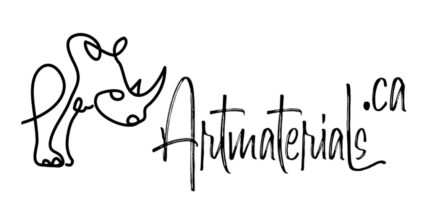- You have no items in your shopping cart
- Continue Shopping

Historically, artists have issues finding pigments that would provide intense primary colours. Most mineral pigments used belonged to colours found in clays, or earth: such as ochre, umber, iron oxide, some earth green and blue-grey. However, bright yellow, red and blue were always a challenge to find.

For opaque red, artists utilized vermilion extracted from mineral called cinnabar. It’s quite an old pigment used for many centuries around the globe. You still can observe it almost unchanged on Ancient Greek abd Roman wall paintings, as well as at Renaissance canvases. However, painting with it is quite toxic. Chemically speaking, it’s Mercuric Sulphide (HgS).
In 1817, a German chemist discovered a new element, cadmium, which became the foundation for new shades of red paints. However, commercial products of cadmium started a whole century after its discovery, in 1919, when a patent was registered for the production of cadmium orange and cadmium red. It’s opaque very intense red that varies from orange to deep red.

Cadmiums are especially toxic in pastels, when you inhale the dust, and in watercolours, gouache or acrylic, when soiled water goes directly to water drainage and soil. And this is a question not personal safety only, but also environment.
For blue colours artists were using minerals such as lapis lazuli, apatite etc. Ultramarine colour made by grinding lapis lazuli into a powder, was one of the most expensive pigments. The name ‘ultramarine’ literally means ‘beyond the sea’, because the pigment was imported into Europe from mines in Afghanistan by Italian traders during the 14th and 15th centuries.
In his fresco painting, Leonardo was reusing this precious pigment many times. Fresco painting implies applying colours on top wet plaster without any binder, as this plaster serves as a binder between pigment particles. After painting, Leonardo carefully drained water from a cup, where he washed his brush after ultramarine use. As particles were very heavy (they are, technically, just very fine sand pieces of a rock), the pigment saddled down and was reused.

Smalt, a pigment made from cobalt blue glass, has been known at least since the Middle Ages. However, the isolation of the blue colour of smalt was discovered in the first half of the eighteenth century by the Swedish chemist Brandt. In 1777, Gahn and Wenzel found cobalt aluminate during research on cobalt compounds, and cobalt industrial production started in early 1800’s.
Cobalt refers to mild toxic pigments. The most worrisome form of cobalt poisoning occurs when you breathe it into your lungs. So, definitely, not recommended for pastelists, airbrush use and fresco painting. When used in watercolours, acrylic or oil, usually cobalt is not a big concern.
To me, cobalt extracting IS a concern. Although cobalt is mined in several countries, the Congo is by far the largest producer. More than half of the world’s cobalt resources are located in the Democratic Republic of Congo, and over 70% of the world’s cobalt mining occurs there, and child labour is involved.
“Of the 255,000 Congolese mining for cobalt, 40,000 are children, some as young as six years. Much of the work is informal small-scale mining in which laborers earn less than $2 per day while using their own tools, primarily their hands.” (The the Wilson Center, The DRC Mining Industry: Child Labor and Formalization of Small-Scale Mining, By Michele Fabiola Lawson on September 1, 2021).
In RUSART products we use no cadmiums due to their environmental impact, and we use only one kind of cobalts – cobalt turquoise, originated from France, being sure that we’re not contributing to slavery and child labour.
(c) RUSART





Very interesting read
Thank you.
I learned important relevant information.
I will say no to cobalt blue and cadmiums
Thank you so much!